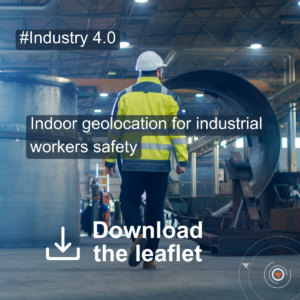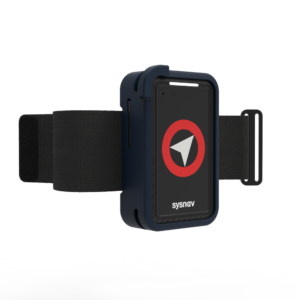INCREASE SAFETY OF WORKERS AND EFFICIENCY OF OPERATIONS
A LONE WORKER PROTECTION SYSTEM FOR INDUSTRIAL CAMPUSES
Occupational safety is a key concern in industrial sectors. There were over 3500 deaths from work accidents in the EU in 2019 according to EU-OSHA.
Lone Worker Protection systems allow isolated workers to call for help or send automatic alerts. But location information is crucial in such cases. However, GPS-based location does not work indoors and RF systems suffer from interferences with buildings materials or machinery. Costly infrastructure and maintenance is another concern.
SYSNAV has developed a Lone Worker Protection System with indoor localization that avoids these issues.
TESTIMONY FROM A SEVESO PLANT: BUTACHIMIE
LONE WORKER PROTECTION SYSTEM FOR INDUSTRIAL SAFETY
SYSNAV has developed a personal 3D positioning and tracking device, SYSNAV PLD, that requires little infrastructure to function indoors and outdoors.
SYSNAV PLD has all automatic alerting features of a lone worker protection system such as fall or standstill detection.
This device has multiple use cases:
- Guarantee the localization and safety of lone workers
- Guarantee rapid on-site intervention in the event of an accident
- Control compliance of the whereabouts of workers, subcontractors or visitors
- Easily locate points of interest
- Optimizing operational processes
Brochure
Fill in the form below to download the leaflet:
OTHER USE CASES OF SYSNAV INDOOR TRACKING
Dosimetry mapping in nuclear power plants
SYSNAV provides an accurate real-time positioning solution during power station operations. The solution contributes to detailed dosimetry mapping with the aim of recording the worker’s trajectory to measure radiation exposure and adapt the trajectory to limit this exposure. The solution also makes it possible to speed up topographic measurements during maintenance shutdowns with a strong time constraint.

3D geolocation of operators in factories
SYSNAV’s personnel positioning solution was used in factories to record repeat trajectories of operators. The tracking data was then analyzed in order to rearrange the location of work stations and save time. As a result, workflows were streamlined and it improved operational efficiency.




